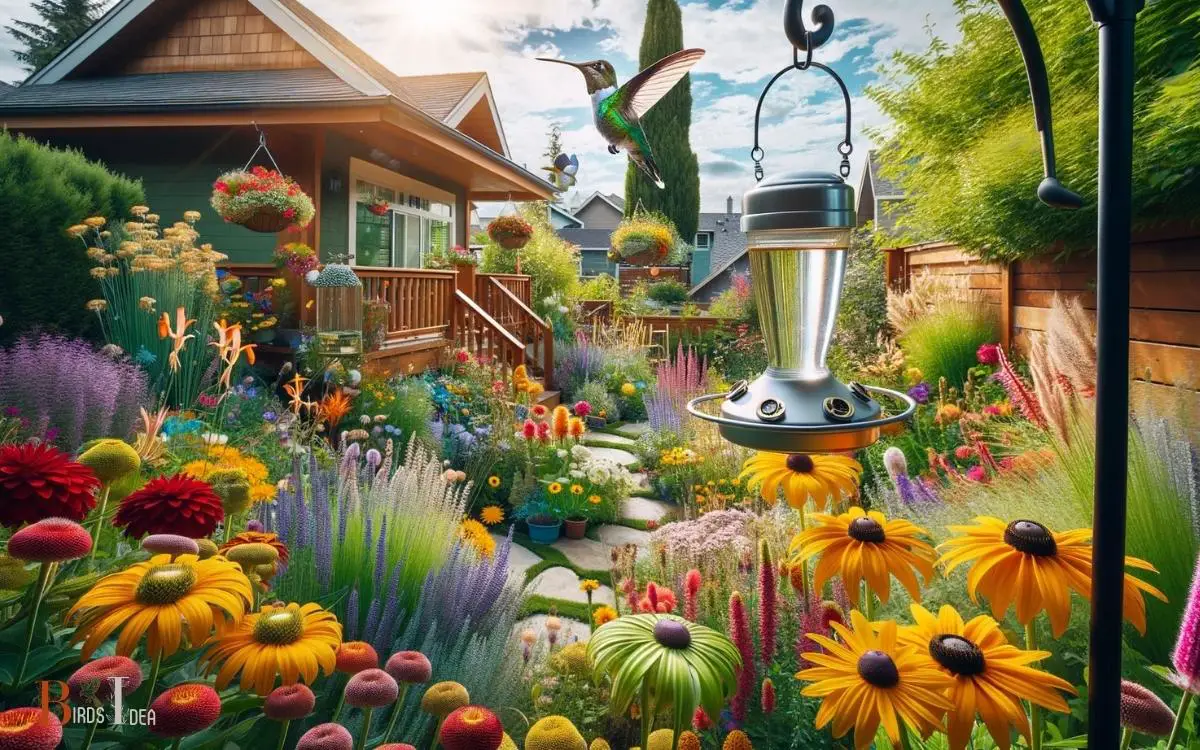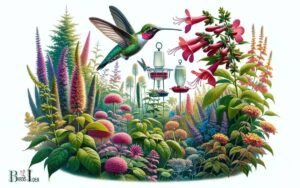How Long Does It Take to Attract Hummingbirds: Discover!
Attracting hummingbirds can take anywhere from a few days to several weeks, or even longer.
Factors such as the availability of food, the presence of native plants, and the time of year can all influence how quickly hummingbirds will discover and frequent your feeder or garden.
Hummingbirds are naturally drawn to areas that provide rich sources of nectar, either from feeders or nectar-rich flowers.
To attract hummingbirds, consider the following tips:
Remember that attracting these birds requires patience; it’s essential to maintain a welcoming environment consistently.
In the quest to entice hummingbirds, patience and continuous efforts in creating an attractive habitat are key ingredients for success.

Key Takeaway
Understanding Hummingbird Behavior
How quickly do hummingbirds adapt to new feeding locations? Hummingbirds are remarkably adaptable creatures, known for their ability to quickly adjust to new feeding locations.
These tiny birds have a strong capacity to learn and remember where reliable food sources are located.
When a new feeding location is established, it may take a few days for hummingbirds to discover it.
However, once they do, they can quickly become regular visitors. Their keen memory enables them to remember the location of feeders and flowers, and they will return to these spots as part of their foraging routes.
The speed at which hummingbirds adapt to new feeding locations showcases their remarkable ability to navigate and thrive in changing environments.
Selecting the Right Feeders
When selecting the right feeders for attracting hummingbirds, it’s important to consider the design and placement to ensure accessibility and visibility for these remarkable avian creatures.
Here are some key factors to keep in mind:
- Feeder Design: Opt for feeders with bright red coloring, as this attracts hummingbirds. Additionally, choose a feeder with perches or feeding ports to allow the birds to rest while they feed.
- Feeder Capacity: Select feeders with an appropriate capacity to accommodate the number of hummingbirds in your area. This will minimize competition and ensure an adequate food supply.
- Feeder Placement: Position feeders in a location that offers some protection from wind and rain, while also ensuring they are visible and easily accessible to hummingbirds.
- Feeder Maintenance: Regularly clean and refill the feeders with fresh nectar to keep the hummingbirds coming back.
After setting up the right feeders, the next step is choosing the best plants to further attract these enchanting birds.
Choosing the Best Plants
Once the right feeders are in place, it typically takes a few weeks for hummingbirds to be attracted to an area with the best plants.
When choosing plants to attract hummingbirds, it’s essential to select varieties that produce nectar-rich flowers in a range of colors, especially reds, pinks, and oranges, which are known to attract hummingbirds.
Some popular choices include bee balm, salvia, and trumpet vine. It’s also important to have a mix of plants that bloom at different times throughout the growing season to provide a consistent food source for the hummingbirds.
Additionally, planting native species is beneficial as they are well-suited to the local climate and provide a familiar food source for the hummingbirds.
By selecting the best plants, one can create an inviting environment that will attract these delightful birds.
Providing a Clean and Safe Environment
Creating a clean and safe environment for hummingbirds involves maintaining hygienic feeders and removing potential hazards from the surrounding area.
It is important to ensure a safe space for these delicate birds to thrive and return to your garden.
Here are some steps to provide a clean and safe environment for hummingbirds:
- Regularly clean feeders with a solution of hot water and white vinegar to prevent mold and harmful bacteria.
- Position feeders away from windows or place visual markers to prevent collisions.
- Keep the surrounding area free of pesticides and chemicals to maintain a healthy habitat.
- Monitor for any potential threats such as lurking outdoor cats or other predators.
Practicing Patience and Persistence
Practicing patience and persistence in attracting hummingbirds requires setting up feeders in an optimal location and maintaining a consistent supply of nectar.
It’s essential to place the feeders in areas that offer some shelter from wind and predators while providing a clear view for the hummingbirds.
Once the feeders are in place, it may take some time for the hummingbirds to discover them. It’s crucial to be patient and continue replenishing the nectar, as it may take a few weeks for the birds to find the feeders.
Even after the first sighting, it’s important to consistently maintain the feeders to encourage return visits.
By being patient and persistent, individuals can create an inviting environment that attracts these fascinating birds.
Conclusion
Attracting hummingbirds takes time and effort, but the rewards are worth it. With the right feeders, plants, and environment, anyone can create a hummingbird haven in their own backyard.
Patience and persistence are key in this process, like coaxing a shy butterfly out of its cocoon.
With a little dedication, the sight of these beautiful birds flitting about will be a delightful and rewarding experience.






